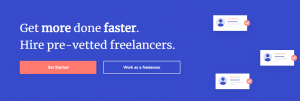One of the most valuable business assets a company has today is its data. The problem is that most companies don’t know how to structure their information and then effectively leverage it to the benefit their organizations and their customers. Despite these challenges, there are now open, hybrid solutions (in the cloud and on premises) that have the unique ability to collect and analyze all of the unstructured data from companies, no matter what apps, devices, or storage are being used. To better plan for the year ahead, we took a look back at the 2015 trends around user interaction with company content.
One thing remained constant – diversity.
The following infographic shows employees used a variety of apps, devices, and storage this year to access and manage company information — more than we have ever seen before.
Applications & Mobility
Although consumer apps are extremely popular on mobile devices, business apps are primarily accessed via desktop. It is not because employees are not mobile, it is simply because today’s employees have more specialized roles. For example, construction workers who spend all day in the field will primarily leverage their applications from a tablet device. Meanwhile their colleagues on the design team, who are stationed at headquarters, will primarily leverage their applications via desktop computers. In some instances, employees even engage in specialized activities, where they may create content while in the office, but need to access it later while on-the-go. While this scenario only accounts for around 15% of employees, it is sizable enough for IT and management to consider.
Diversity Amongst Devices
While employees may be working from a specific set of approved applications, they use a variety of devices to access them. Although it has traditionally been seen as a Mac vs. Windows argument, in business today many different operating systems are being used to get the job done. Trends we have seen within subsets of our customers’ users this year are: R&D departments frequently working with Linux, sales teams tending to be more favorable towards Windows, and creative/marketing teams often collaborating via Mac OS. Again, the takeaway here is that businesses need to be able to support a variety of use cases and employee profiles. To do so, they must provide them with the ability to choose their own device, operating system, and even the specific applications they are most comfortable working with.
Browser Preference
When it comes to browsers there is no standardization or mandate from companies either. The data reflects that Google Chrome is the favorite this year, but there is still legitimate use of Internet Explorer, Firefox, and Safari. What’s surprising is that employees are significantly more fickle here than they are for other tools, like email or content editing solutions. They are willing to navigate through many windows across multiple browsers when interacting with their content – 40% using two or more at once.
In today’s technology-rich society, employees are easily customizing the way they work. While every organization may be different,, there is no denying that employee diversity is forcing IT to provide freedom and choice to their users. From devices and operating systems, to apps and services, it will be extremely important for companies to resist standardizing as it will ultimately hampers employees’ ability to work. Instead, IT needs to maintain visibility and control no matter what the employees decide to use and configure for their unique and varied workflows.
This can only be accomplished with an open, hybrid platform that can securely manage your information infrastructure and how it is being consumed and shared. Many cloud-only solutions aren’t able to provide this functionality for content, as they only have control of what resides in their stack. This inevitably forces users toward those content editing tools, which may be subpar in comparison to more popular apps on the market. Employees should be able to continue to work the way they want to, while your IT department safely manages the environment. No compromises required — just freedom of choice for IT and the organization.
*This piece originally appeared at CloudTweaks*
Business & Finance Articles on Business 2 Community(34)








